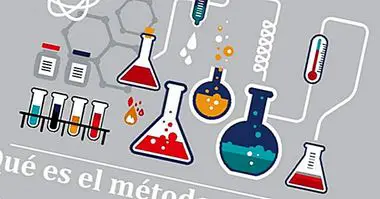The 8 types of emotions (classification and description)
Psychology has always been interested in emotions , because they influence our thinking, our behavior and even our mental health.
That's why the concept of emotional intelligence has been gaining ground in recent decades and words like emotional validation, emotional regulation or emotional management are becoming increasingly familiar. It is proven that emotional intelligence improves our well-being and our performance. In this article we will talk about emotions and how these human manifestations are classified.
- Related article: "The 10 benefits of emotional intelligence"
What are emotions?
There are many theorists who have tried to explain what emotions are . For the psychologist David G. Meyers, emotions are composed of "physiological arousal, expressive behavior and conscious experience".
At present, it is accepted that emotions originate in the limbic system and that these complex states have these three components:
- Physiological : It is the first reaction to a stimulus and they are involuntary: breathing increases, changes at the hormonal level, etc.
- Cognitive : The information is processed at a conscious and unconscious level. It influences our subjective experience.
- Behavioral : Causes a change in behavior: the gestures of the face, the movement of the body ...
- Over the years, there has been some debate between what is an emotion and what is a feeling. You can know the difference in our article: "The 16 types of feelings and their psychological function"
Theories of emotion
In fact, different theory about emotion has been formulated for decades. The most important are classified in three ways: physiological, neurological and cognitive.
- Physiological theories : they affirm that intracorporal responses are responsible for emotions.
- Neurological theories : they state that activity in the brain leads to emotional responses.
- Cognitive theories : propose that thoughts and other mental activities are responsible for the formation of emotions.
- You can delve into these theoretical models in our post: "Emotional psychology: main theories of emotion"
Classification of emotions (types)
But, How are emotions classified? There are different types of emotions, below you can find a list with a brief explanation of each of them. Keep in mind, however, that it is not a definitive classification, since none will capture 100% how emotions are grouped and related; simply, it is a useful classification.
1. Primary or basic emotions
Primary emotions are also known as basic emotions , and they are the emotions that we experience in response to a stimulus. For Paul Ekman, he affirmed that the basic emotions are 6: sadness, happiness, surprise, disgust, fear and anger. All of them constitute processes of adaptation and, in theory, exist in all human beings, independently of the culture in which they have developed.
However, recently, an investigation carried out by the University of Glasgow, which was published Current Biology, concludes that there are six basic emotions, but there are four.
- You can learn more about this study in our article: "Study shows that the basic emotions are four, and not six as was believed"
2. Secondary emotions
Secondary emotions are a group of emotions that follow the previous ones . For example, when we experience the basic emotion of fear then we can feel the secondary emotions of threat or anger, depending, of course, on the situation we are living. Secondary emotions are caused by social norms and by moral standards.
3. Positive emotions
Depending on the degree to which the emotions affect the behavior of the subject, these can be either positive or negative. . Positive emotions are also known as healthy emotions, because they positively affect the well-being of the individual who feels them. They favor the way people think, reason and act. For example, joy, satisfaction, gratitude do not provoke a positive attitude towards life and make us feel experiences that help us feel good.
4. Negative emotions
Negative emotions are opposed to positive emotions, because negatively affect the well-being of people . They are also known as toxic emotions, and often provoke the desire to avoid or evade them. Fear or sadness are some examples.
However, we must bear in mind that this type of emotions, in small quantities and relatively low intensity, are not harmful.In fact, they are part of the learning process, because thanks to them our emotional memory helps us remember the consequences of certain behaviors (or expose ourselves to certain contexts).
5. Ambiguous emotions
Ambiguous emotions are also known as neutral emotions, since do not provoke neither negative nor positive emotions, neither healthy nor unhealthy . For example, surprise does not make us feel good or bad.
The existence of these emotions makes it clear that we are complex animals, and that our experiences have many nuances.
6. Static emotions
Some authors have also made reference to static emotions . They are those that are produced thanks to different artistic manifestations, such as: music or painting.
Thus, when listening to a song we can feel very happy or very sad, but that feeling would be qualitatively different from the happiness or sadness that is experienced before any other experience, since it is lived in an artistic context, mediated by symbols and attributions on the intentions of the author.
- Related article: "The 10 songs that make us feel better (according to science)"
7. Social emotions
Social emotions do not refer to culturally learned emotions , but it is necessary that there is another person present or else they can not emerge. For example, revenge, gratitude, pride or admiration are emotions that we feel about other individuals.
8. Instrumental emotions
The instrumental emotions are those that have as purpose or objective the manipulation or the purpose of achieving something . They are difficult to recognize because they may appear to be natural. However, they are forced emotions and hide an intention. Sometimes, they are the result of self-suggestion: submitting to certain contexts voluntarily to make a part of that emotion color our way of behaving.
The importance of emotional education
Many times we do not realize the importance of emotional education . In schools, for example, they are more concerned with teaching us to be good professionals, and neglecting to become emotionally intelligent and emotionally healthy. Emotional intelligence has proven to be a basic tool for our mental health and is, without a doubt, a way to empower ourselves in front of life, to become people much more prepared for day to day life. Much happier!
Emotional intelligence is a term that became famous thanks to Daniel Goleman, and since then many studies have affirmed that it is positive not only for our daily life, but in work, sports and even education, it is highly effective and contributes many benefits for performance.
- Related article: "Daniel Goleman: biography of the author of Emotional Intelligence"
According to Goleman, the components of emotional intelligence are:
- Emotional self-knowledge
- Emotional self-control
- Self motivation
- Recognition of the emotions of others
- Relationships
- Surely you want to know more about this theory. So you can visit our post: "What is Emotional Intelligence? Discovering the importance of emotions"
Bibliographic references:
- Damasio, A. (2014). In search of Spinoza: neurobiology of emotion and feelings. Barcelona: Booket, 2014. ISBN 978-84-233-4615-8.
- Ekman, P. (2004). What does that gesture say? Barcelona: RBA202f: Integral, 2004. ISBN 978-84-7871-202-1.
- Salmurri, F. (2015). Reason and emotion: resources to learn and teach to think. Barcelona: RBA, ISBN 978-84-9056-407-3.



















